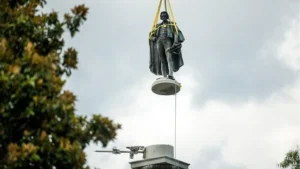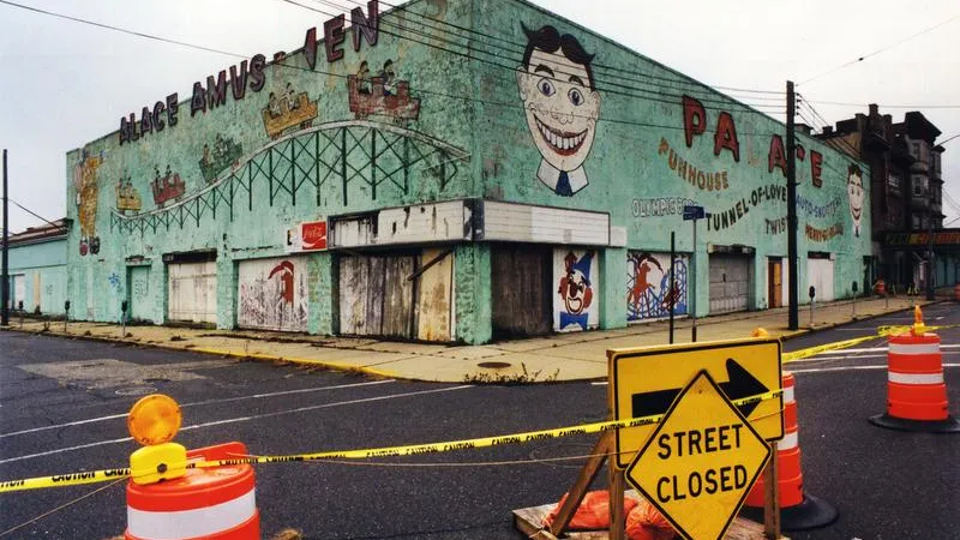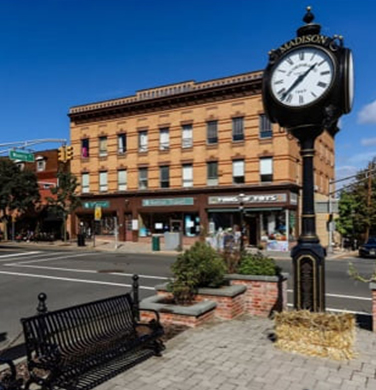When the State Register was created in 1970, the task of administering it was place under the auspices of the Department of Environmental Protection.
This strange marriage of convenience has resulted in giving certain officials within the DEP – with seemingly no experience in preservation – incredible power to decide the fates of our most important landmarks.
Last August, NJ Transit came to the Historic Sites Council – which reviews changes to National Register-listed places – seeking permission to renovate Bloomfield Station. The Historic Sites Council initially denied the application because it would have destroyed distinct features of architect Frank Nies’s design.
Two months later, Elizabeth Dragon, assistant commissioner at the DEP, sent NJ Transit a letter reversing the decision and approving the renovation, allowing a complete demolition of the current platform.
It seemed odd to Ed Michalski, board president of the Bloomfield Center Alliance, that such an important decision came from someone without a background in historic preservation.
Make no mistake, Michalski didn’t want to delay the much needed renovation, he said.
“However, I believe that with thoughtful effort, the renovation could have been accomplished in a manner more respectful of the station’s status as listed on the National Register of Historic Places,” he said.
Larry Hajna, the DEP media director, sent me an exhaustive 1,300-word response about why Dragon was in her rights to rule on these applications and her qualifications.
“The assistant commissioner makes the final decision based upon material included in the application, testimony given at the Historic Sites Council meeting, the written recommendation of the Historic Sites Council, and any additional information received by the department,” Hajna said. “As a result, the department was able to make a final decision on the application having the necessary information in hand and within the 120-day deadline.”
Hajna is correct that Dragon has the right to make decisions and even reverse the positions taken by the Historic Sites Council, but he wasn’t able to explain why she would do so or comment on the impression that her involvement gives to the process.
The members of the state’s Historic Sites Council are leaders in fields of preservationist, planning, history, and architecture. Yet, Dragon, hired in 2008 to lead the DEP’s division of watershed management, is an environmental engineer. In 2021, she was named assistant commissioner of economic revitalization, which is a strange title for someone in the environmental protection field.
 Shortly after Dragon’s promotion in 2021, she ruled on one of the DEP’s most controversial applications to date – the removal of Newark’s Christopher Columbus statue, a gift to the city from Italian-American immigrants in 1927, and its replacement with a monument to Harriet Tubman.
Shortly after Dragon’s promotion in 2021, she ruled on one of the DEP’s most controversial applications to date – the removal of Newark’s Christopher Columbus statue, a gift to the city from Italian-American immigrants in 1927, and its replacement with a monument to Harriet Tubman.
This issue here is not about litigating Columbus as a historical figure — it was the city’s breach of protocol that was at fault. City officials never came before the local Landmarks & Historic Preservation Commission, nor were community members included in the decision-making, not even Newark Landmarks, a nonprofit that helped get the park where the statue is located on the National Register in 1978.
The whole affair opened old wounds with regard to how the Newark’s LHPC has been treated. It was made worse by Dragon’s intervention, which preservationists called political. It proved once again that the guardrails preservationists fought so hard to put in place – protecting landmarks from powerful individuals – could be dismantled with a stroke of a DEP official’s pen.
“Of course it diminishes our power – intentionally,” said Flavia Alaya, who sits on the Historic Sites Council about Dragon’s involvement in their decisions.
Another way the DEP has diminished the Historic Sites Council’s power is by not authorizing any new members. “We are so short-membered that we are often unable to achieve quorum, ipso facto failing of our review capacity, let alone follow-up to previous reviews,” Alaya said.
The politicization of historic preservation certainly didn’t begin with Dragon. It has deep roots. In 2004, when Asbury Park’s Palace Amusements – a Victorian-era boardwalk land – was being demolished, preservationists turned their attention to saving the leftover artifacts, which includes the famous Tillie mural.
 When a developer wants to demolish a landmark on the National Register register, the DEP must issue a permit. These permits can place certain conditions on the developer. In this case, the oversight of the salvaged artifacts was placed with the developer-friendly land use division within DEP, instead of the State Historic Preservation Office, and in the twenty years since, land use officials have never given developers a deadline or required them to meet specific preservation standards.
When a developer wants to demolish a landmark on the National Register register, the DEP must issue a permit. These permits can place certain conditions on the developer. In this case, the oversight of the salvaged artifacts was placed with the developer-friendly land use division within DEP, instead of the State Historic Preservation Office, and in the twenty years since, land use officials have never given developers a deadline or required them to meet specific preservation standards.
“All of the historic properties should have been put under the authority of SHPO,” said Bob Crane, president of Save Tillie. “SHPO had the expertise, staff, and knowhow.”
Crane’s two-decade fight to preserve what remains of the Palace Amusements – which made Preservation New Jersey’s list of the state’s most endangered places last year – is only partly about the artifacts. It is a larger fight to expose the DEP’s role in creating loopholes for developers that have led to the destruction of history and architecture.
“There was pressure from the developers because SHPO had overseen the placement of the Palace Amusement on the National Register,” Crane said. “It was a power play.”





